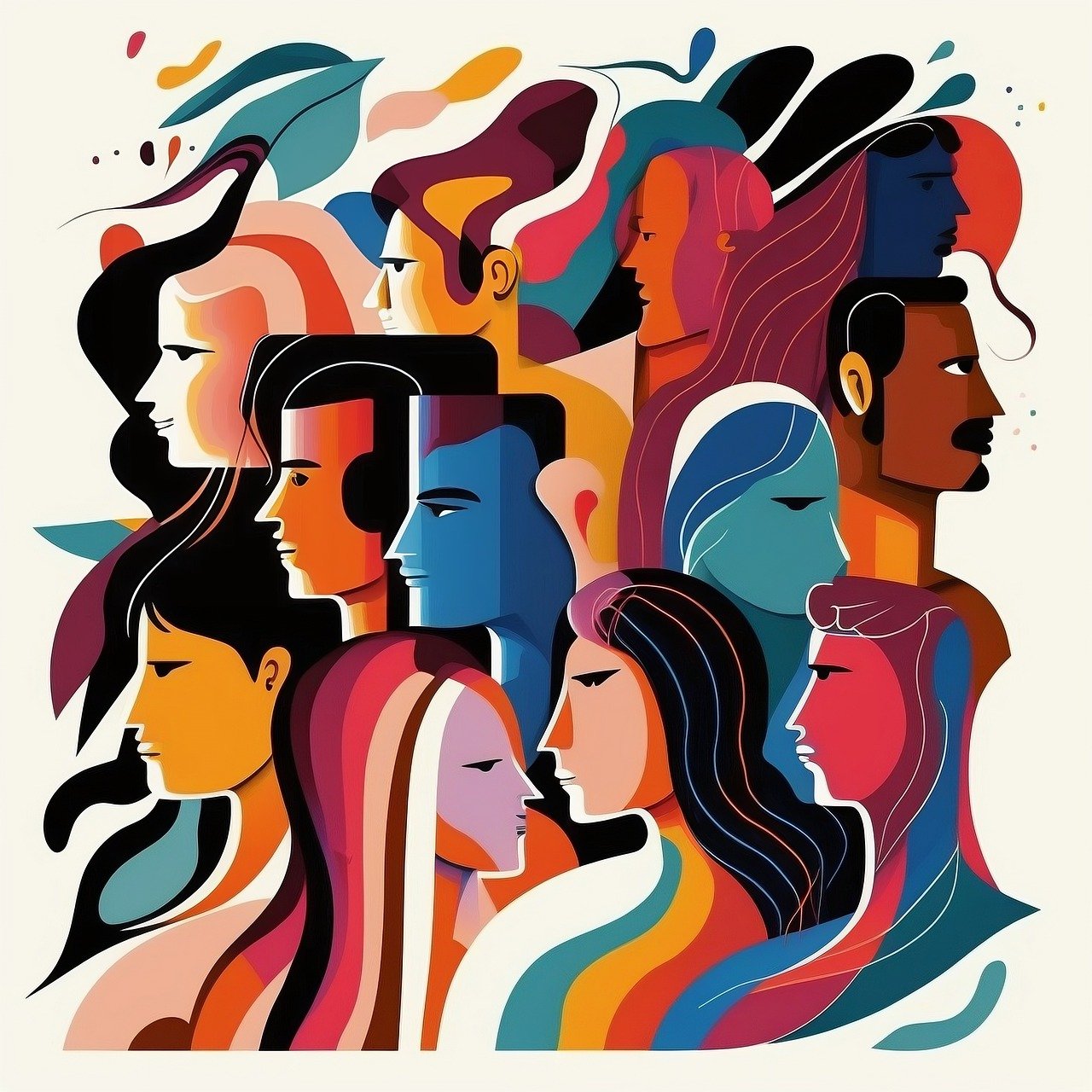MIT and Yale

In 2013, Students for Fair Admissions (SFFA) filed a lawsuit against Harvard University in the U.S. District Court in Boston. They alleged that Harvard’s undergraduate admission practices violated Title VI of the Civil Rights Act of 1964 by discriminating against Asian Americans. As an Asian American, I was intrigued.
After lower courts upheld Harvard’s limited use of race as a factor in admissions in 2019 and 2020—finding no evidence of ‘discriminatory animus’ or ‘conscious prejudice’—the Supreme Court reversed these rulings on June 29, 2023. In the majority opinion, Chief Justice John Roberts declared that affirmative action in college admissions is unconstitutional.
Following the Supreme Court’s ruling on affirmative action, I thought it would be fascinating to share the latest class profiles from MIT and Yale. Would anything change? I had my doubts. Both are among America’s top universities, with acceptance rates below 7%.
So few people attend these types of schools that most of us will likely be unaffected by the ruling. Nevertheless, during my time working in finance in NYC and San Francisco, I became acquainted with many alumni from such prestigious institutions. I also encounter alumni from similar schools in the tech industry and among the parents at my children’s school.
MIT And Yale’s Class Demographics Assumptions
Given that Students for Fair Admissions believed White and Asian American applicants were being discriminated against in college admissions, you might assume the following about the incoming class demographics at MIT and Yale after the Supreme Court’s banning of affirmative action:
- 1) A decline in Black and Hispanic enrollment
- 2) An increase in White and Asian enrollment
- 3) A consistent demographic enrollment trend by race at both universities
If you thought these assumptions were correct, you’d be mistaken! Let’s examine the data.
Yale Demographics Profile Of Incoming Class Of 2028
Here’s what the Yale News reported:
According to the first-year class profile released by the admissions office, 14 percent of the class of 2028 identifies as African American, 24 percent as Asian American, 19 percent as Hispanic or Latino, 3 percent as Native American and 46 percent as white.
Compared to the class of 2027, admitted in the last race-conscious admissions cycle, the class of 2028 saw a 4 percent increase in the share of white students and a 6 percent decrease in the share of Asian American students. The percentage of both Black or African American students and Native American students remained the same.

In other words, the banning of affirmative action benefited Whites, hurt Asian Americans, helped Hispanic/Latinos, had a neutral effect on African Americans, hurt International students, and was neutral for Native Americans at Yale. What a mixed picture!
Thoughts On Yale’s First Class Post Affirmative Action Ban
The biggest surprise is the 6 percent decrease in Asian American students for the Class of 2028, followed by the 4 percent increase in White students. During the lawsuit against Harvard, it was revealed that Asian American students required higher test scores to have the same chance of getting in than applicants of other races.

Subjective Measure To Throttle Objective Results
To lower the overall scores of Asian American applicants, Harvard used subjective measures, such as a personality score. I found it disappointing that Harvard would consistently rate Asian American applicants as having the lowest personalities, while Blacks consistently had the highest personalities. How can you really tell, especially if only a minority of applicants are interviewed?
Undaunted, I came up with a post on how high school students can improve their personalities. With better personalities, life gets easier. Your personality could grow strong enough to launch a website read by millions of people each year—even as an Asian American!
However, even with a great personality, you might still be held back if the gatekeeper isn’t objective. That’s why one goal you should consider is becoming more resourceful, so gatekeepers have less of an impact on your future.

How Different Races Should Think About Applying To Yale
After the affirmative action ruling, the percentage of Asian American students at Yale should have at least remained stable. Instead, it dropped from 30 percent to 24 percent, a notable 20 percent decrease. This suggests that Yale may have intentionally reduced the number of Asian American admits. As a result, Asian American high school seniors might reconsider applying to Yale or using their Early Decision spot for this university.
Conversely, more White, Black, and Hispanic students should consider applying to Yale. The percentage of White students increased from 42 percent to 46 percent, a significant rise. Yale might be placing greater emphasis on legacy admissions, giving more preference to children of alumni.
Some believe legacy admissions is a type of affirmative action for the rich and privileged.
The median income of Ivy League graduates is significantly higher than that of non-Ivy League graduates by mid-career. As a result, children of Yale alumni tend to enjoy more comfortable lifestyles and also benefit from a huge admissions advantage, with a 3-5X higher acceptance rate, simply due to their background.

Yale Is Going To Do What It Wants
Another conclusion is that the ban on affirmative action does not seem to have impacted Yale’s admissions practices. As a private institution, Yale has more flexibility in its policies compared to public universities. Given that Yale was not subject to a similar lawsuit, it may feel more empowered to implement its own admissions strategies.
Organizations like Students for Fair Admissions are likely scrutinizing Yale’s latest class demographic data and considering their next steps. If the trend continues, I wouldn’t be surprised if Yale finds itself defending its admissions policies in court.
MIT Demographics Profile Of Incoming Class Of 2028
Compared to the Class of 2027, MIT’s Class of 2028 experienced a decrease in the percentage of Black students, dropping from 15 percent to 5 percent. The share of Hispanic students also fell, from 16 percent to 11 percent. The percentage of White students decreased slightly by 1 percent, to 37 percent. Conversely, Asian American enrollment increased significantly, rising from 40 percent to 47 percent.
For proponents of affirmative action in college admissions, MIT’s Class of 2028 profile represents exactly what they feared: a significant reduction in underrepresented minorities and a notable increase in Asian American students.
This shift mirrors trends observed at University of California schools like UCLA and Berkeley following California’s ban on affirmative action in 1996. Today, 40 percent plus of its student populations are Asian American.
Unlike Yale, MIT did not provide a detailed line chart to compare historical trends. Instead, MIT provided a chart based on self-reported ethnicity for one year below.

Thoughts On MIT’s First Class Post Affirmative Action Ban
I was struck to see that 47% of MIT’s incoming class consists of Asian Americans. Considering that Asian Americans make up only about 7 percent of the U.S. population, this 6.7-times overrepresentation is remarkable.
I’ve always viewed schools like MIT and Caltech as “super nerd” institutions, where academics take priority over everything else. Sports and the arts are secondary considerations.
If you’re Asian American, you might think that, given the large representation of Asian students at MIT, getting in would be easier. It is clear that MIT does not discriminate against Asian Americans. Some might even argue that MIT is more focused on merit than on diversity, equity, and inclusion.
That said, with an acceptance rate of only 4%, your odds of getting in are still just 1 in 25—so don’t get your hopes up! But given that people often gravitate toward others of the same race, I suspect this class profile might encourage even more Asian Americans to apply in the future.
If you’re Black or Hispanic, you might feel less inclined to apply to MIT, and as a result, the number of Black and Hispanic students could continue to shrink as the applicant pool decreases. Instead, it might be more strategic to apply to Yale or another university that has seen an increase in Black and Hispanic enrollment.
Related: Income By Race: Why Asian Income Is The Highest
Economic Diversity Of College Students Is Increasing
Economic diversity seems to be on the rise at some of the top universities, which is encouraging. Many would agree that helping low-income students from all races is more equitable than focusing solely on one race, regardless of wealth.
UVA: One of the least economically diverse public colleges in America, reported an increase in the percentage of students receiving Pell Grants from 16% to 24%. Federal Pell Grants are typically awarded to undergraduate students who demonstrate exceptional financial need and do not have a bachelor’s, graduate, or professional degree. These grants do not need to be repaid.
Duke: A top private university, historically dominated by students from wealthy families, saw the percentage of Pell Grant recipients rise from 17% to 22%
My Background and Thoughts on Getting Into Elite Colleges
As an Asian American, I had no chance of getting into these types of schools after graduating from a public high school in Northern Virginia. My academics were good, but not exceptional, and I didn’t have a formidable topspin backhand to get recruited by a Division I university. As government employees, my parents weren’t wealthy or well-connected to help me get into these schools either.
That’s why I attended William & Mary, a public university in Virginia for $2,800 / year in tuition versus $20,000 / year in tuition at a private university. It’s a solid school, and I had a fantastic experience. But it generally ranks in the top 35-50 in most polls. My main priority was going to the best university that was also the most affordable.
Despite going to a smaller public university outside the top 25, I’ve had a good life. As a result, I’m in favor of public education and won’t stress if my children don’t get into elite private universities. It would be nice if they did, so I could better understand what it’s like from a writer’s perspective, but it’s not necessary.

The Importance Of Self-Sufficiency
The chances of my Asian/Hawaiian children getting into a top 25 university are slim. There are simply too many brilliant, hardworking, and wealthy high schoolers competing for a limited number of spots.
This is why I will teach my kids entrepreneurship and involve them in landscaping and rental property maintenance—so they can become more self-sufficient. Once you know how to make money on your own and do things, life gets a whole lot easier.
My expectation is that my children will attend community college and then transfer to a decent state university, just like their parents. If they do, they’ll each have at least $35,000 from their 529 plans to roll over into a Roth IRA, enabling them to start their lives without student debt.
Hooray for being average! It’s much easier to beat expectations if you are.
Don’t Wait For Superman To Save You
I understand the purpose of affirmative action—to give marginalized racial groups a chance to get ahead. If my people had a history of enslaving another group and then locking them out of wealth-building opportunities after emancipation, I’d feel a responsibility to make things right too. Helping their children get into college would be the least I could do.
Unfortunately, since top colleges refuse to expand the number of available spots to match demand, other groups inevitably face negative consequences due to affirmative action. As a result, the Supreme Court banned it, 20 years after its last defense in 2003.
The gatekeepers will always decide who gets opportunities. As a result, much of this is beyond our control, especially if they are trying to make non-financial reparations. Instead of waiting for Superman to save us, it’s better to accept the way society works and focus on relying on ourselves to get ahead.
Thankfully, technology has made education free or affordable for anyone who wants to learn. While it’s interesting to watch how elite institutions and the brightest minds compete for status and the potential to earn lots of money, we need to focus on making the most of our own lives.
Reader Questions
What are your thoughts on Yale and MIT’s demographic profiles after the Supreme Court banned affirmative action in college admissions? Do you think the ruling will make a significant difference?
Curious about what elite university graduates do and how they think? Here’s a conversation I had with a Yale graduate who chose to leave a lucrative career at BlackRock at age 37. Although he now has a net worth of around $5 million in his mid-40s, he’s still grappling with some personal challenges.
For 99.9% less than a college education, but far more practical, pick up a copy of WSJ bestseller, Buy This Not That. It’ll help you think in probabilities and tackle some of life’s biggest decisions.
To expedite your journey to financial freedom, join over 60,000 others and subscribe to the free Financial Samurai newsletter. Financial Samurai began in 2009 is a top personal finance site today.




